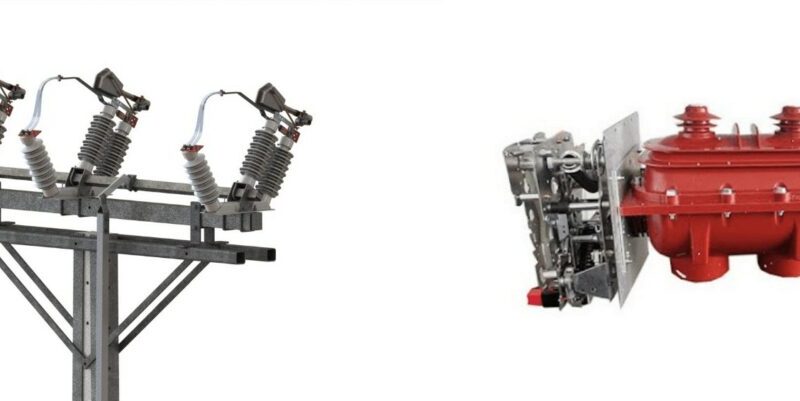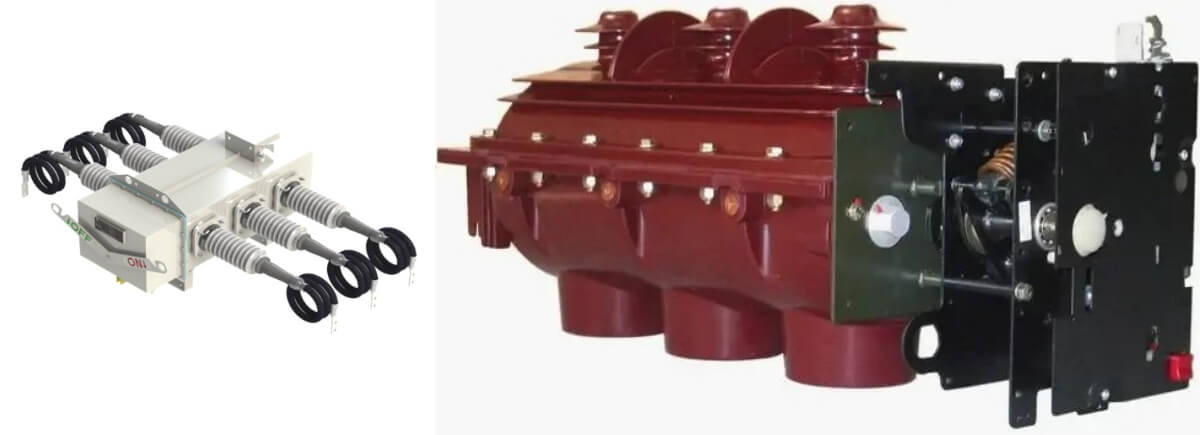
A Complete Guide to Load Break Switch
Load break switch Electrical equipment plays a crucial role in supplying power to industries, homes, and workplaces. Just as important as maintaining power supply is the ability to safely disconnect it when necessary—especially when irregular or faulty load currents arise. To prevent damage and ensure safety, switchgear assemblies, including load break switches, are essential components in any electrical installation.
In this article, we will walk you through everything you need to know about load break switches (LBS)—from their working principle and advantages to types, specifications, and how they differ from circuit breakers.
1. What Is a Load Break Switch?
A Load Break Switch (LBS) is designed to safely switch electrical circuits under load conditions. It allows for the connection and disconnection of circuits carrying normal current, and can also interrupt small fault currents. Unlike a simple disconnector, a load break switch can break current without causing hazardous arcing, thanks to arc-quenching mechanisms such as:
- Arc horns
- Spring mechanisms
- Whip interrupters
Load break switches can be manual, automatic, or motorized with trip functionality. They are commonly used in applications such as:
- Emergency shutdowns
- Public power distribution networks
- Motor feeders
- Electrical panels in factories
For example, a friend of mine runs a faucet manufacturing plant. To protect both the equipment and workers from electrical overloads, he installed load break switches that enable safe and automatic disconnection in case of emergencies.
Key Functions of a Load Break Switch:
- Must safely interrupt rated load current at system voltage
- Should provide full isolation when open
- Must be capable of breaking small capacitive/inductive currents
- Should withstand short-circuit currents until cleared by upstream protection
2. What Is a No-Load Break Switch?
A No-Load Break Switch (also known as a disconnector or isolator) is a device that can only be operated when there is no current flowing through it. It’s used to isolate electrical equipment for maintenance, inspection, or replacement.
Unlike load break switches, these cannot interrupt load or fault currents. Attempting to open them under load can cause dangerous arc flashes, fires, or personal injury.
Examples of No-Load Break Switches:
- MC connectors in solar PV systems
- Finger-safe fuse holders in combiner boxes
- Tool-operated isolation switches
3. How Does a Load Break Switch Work?
Load break switches operate by mechanically separating contacts at a specific speed, which interrupts the current flow. They must endure mechanical, thermal, and dielectric stresses during operation.
To ensure safety and reliability, LBS units are tested per IEC 62271-103 standards, focusing on:
- Breaking performance at rated current
- Transient Recovery Voltage (TRV) behavior
- Capacitive and inductive current switching
- Fault withstand and short-circuit making capacity
4. Advantages of Load Break Switches
- Cost-effective: Much cheaper than circuit breakers, ideal for budget-conscious installations.
- High safety: Can be operated from a safe distance, minimizing arc flash risk.
- Arc extinction: Equipped with arc-suppression mechanisms for safe switching.
- Easy operation: Manual or spring-assisted switching with no special tools needed.
- Transformer protection: Often paired with HRC fuses to protect against internal faults.
- Reliable interlocks: Prevents accidental contact or operation during maintenance.
5. Functions of Load Break Switches
- Making and breaking circuits safely under load
- Protecting circuits from abnormal current conditions
- Interrupting magnetizing and capacitive currents (e.g., in transformers and cables)
- Ensuring life and property safety by reducing fire and electrical hazard risks
6. Symbol of Load Break Switch
In schematic diagrams, each switchgear component has a distinct symbol. Unlike isolators, circuit breakers, and disconnectors (which typically include a horizontal isolation line), the load break switch symbol focuses on its load-switching capability, not just isolation.
7. Types of Load Break Switches
1) Vacuum Load Break Switch
- Uses vacuum to extinguish arc
- Long electrical life
- Suitable for up to 220 kV
- Compact and often motorized
2) SF6 Load Break Switch
- Uses sulfur hexafluoride gas as insulation and arc extinguisher
- Compact, maintenance-free, highly reliable
- Ideal for 35 kV and above applications
3) Air Load Break Switch
- Uses air as arc-extinguishing medium
- Includes arc chutes, horns, and compressed air
- Suitable for voltages above 60 kV
4) Medium Voltage Load Break Switch
- Handles 3.3 kV to 36 kV
- Can use vacuum, SF6, or oil as interruption medium
- Designed for indoor/outdoor switchgear systems
5) High Voltage Load Break Switch
- Includes solid-state, high-pressure air, and oil-immersed types
- Designed for 35–220 kV systems
- Complex structures for handling large arc energy
6) Low Voltage Load Break Switch
- Rated below 1 kV
- May include MCCBs, MCBs, HRC fuses
- Provides overload and short-circuit protection in residential and commercial systems

8. What Is “Switch Load”?
In electrical terms, “load” refers to the power consumption on a circuit. The switch load is the electrical demand that a switch can safely handle. For example, switches used with Ground Fault Circuit Interrupters (GFCIs) must be installed correctly to avoid bypassing protection, which could be dangerous.
9. Specifications and Tests
Tests Performed on LBS Include:
- Routine Test: Checks basic performance and TRV withstand capacity
- Capacitive Switching Test: Simulates cable or line disconnection
- Closed Loop Switching Test: Assesses performance when both sides are energized
- Short Circuit Test: Verifies endurance under fault-level currents
Regular Inspections are essential to ensure ongoing reliability and schedule preventive maintenance.
10. Load Break Switch vs. Circuit Breaker
| Feature | Load Break Switch | Circuit Breaker |
|---|---|---|
| Function | Switches circuits under normal load | Breaks both load and fault currents |
| Fault Protection | Not suitable for fault current | Automatically trips during faults |
| Operation Frequency | Can be operated frequently | Limited operation cycles before wear |
| Cost | Economical | More expensive |
| Applications | Switching operations | Protection & switching |
Circuit breakers provide fault protection, while load break switches are mainly for load switching.

11. Conclusion
A Load Break Switch is an essential device in electrical installations, offering a safe, cost-effective way to switch circuits under load. It complements circuit breakers by managing regular switching tasks while the breakers handle fault protection.
Whether in industrial or domestic applications, LBS units enhance safety, reduce maintenance, and protect valuable equipment—making them a crucial part of modern electrical infrastructure.
Professiona Switchgear supplier and manufacturer
- Zhejiang GONGSHUN Electrical Co.,Ltd (electricgs.com), Our company was founded in the late 1990s, specializing in the production of inflatable cabinets, SF6 inflatable cabinets, and various high and low voltage complete sets of electrical equipment. It has multiple subsidiaries under its jurisdiction, including high-voltage load switch branch, high-voltage circuit breaker branch, high-voltage fuse branch, and technology development branch.Our technical expertise, comprehensive product portfolio and long-term rich experience are helping many customers in need to solve their power problems. We’re happy to help at any time. Whether you need application product advice or technical assistance, our global service team is committed to providing you with the right support. For more technical information about medium voltage earthing switch, feel free to contact us, send an email to gongshun@electric-cn.com
- Our company specializes in producing 12KV-40.5KV series high-voltage electrical products: FZN58, FLN48, FLN36, FZRN25, FZN21, FN18, ZFN16, FN12, FN8, FN7, FN5, XRNT, XRNP, VS1, ZN28, ZW8, ZW32, JN15, GN19, GN22, GN24, GN30, CLXGN15-12, HXGN □ -12, DXG-12 (L), DFW □ -12 high-voltage cable branch box, CLXGN □ -12 (SF6) series inflatable cabinet 12KV and 35KV cable accessories, etc; CLVXP-12 indoor AC high voltage fixed switchgear, CL-SIS-12 compact solid insulated ring main unit, professional assembly Schneider SC6 (SF6) series load switchgear, ABB produced SFG (SF6) series load switchgear and other series products; Distribution and agency of high-voltage load switches and inflatable cabinets produced by Schneider Electric and ABB; Siemens produces the 3AJ1 series of indoor medium voltage vacuum circuit breakers and other related products. The company has a complete range of products and has been operating safely on domestic and international power grids for a long time, receiving unanimous praise from both new and old users. Among them, multiple products such as FZRN25, FN12, FLN36-12, XRNT-12 have been exported to various countries and regions in East Asia, South Asia, Southeast Asia, Africa, and the United States.
